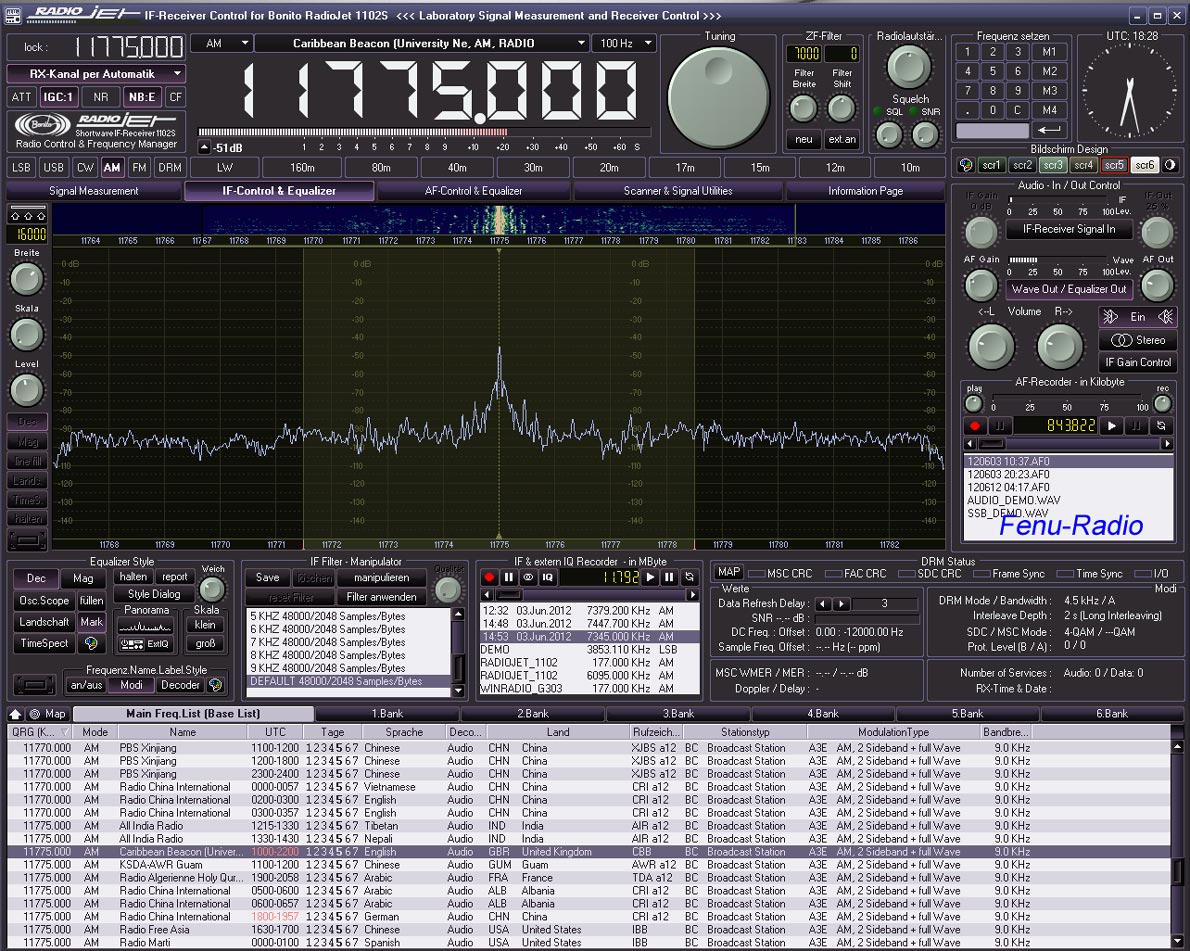|
Even before its introduction to the market shortly before Christmas 2011, there were wild speculations, debates and even fights. Nobody knew exactly, what sort of radio would appear on the market. Due to faulty parts, production and shipping were delayed and additionally, there was a shortness of supply which gave even more reasons for speculations. All in all, it was an unsuccessful start for the RadioJet 1102. In the mean time, the receivers have been shipped and speculations ended. Bonito was friendly enough to put a RadioJet at my disposal for testing Thank you vey much! What sort of radio is the RadioJet? Well, it is no normal SDR. It is an analogue receiver with a soundcard in the same case. The signals are digitized and sent to the PC. With an extensive software the signal can then be decoded, analyzed before it is sent to the loudspeaker. There is some getting used to it because of the enormous capabilities of the software. During this learning curve, the manual will become a good friend of yours because you will get to know functions which you didn't know before. Reception range is from 40 KHz to 30MHz in AM, SSB, CW, FM, WFM and DRM. There is also room for external frequency converters to enhance the reception range. By the way, DRM works without external software. The software has functions which are unrivalled in its class. An interesting new function is the RX/DX channel. This function makes it possible to enhance sensitivity and decrease noise at the same time. Of course, this results in a slight loss of large signal immunity but it makes listening to weak signal possible. This feature only works in a quiet environment. Another handy feature: The selected station is shown in the spectrum next to the signal peak and appears on a world map with the borderline of day/night being shown. Another unique feature is the 'filter manipulator'. You can create your own bandwidths and save them. Its is also possible to draw any number of notch filters within these band width filters. The steepness of the filters can be adjusted as well. The spectrum scope can have the form of a waterfall and even 3D with many possibilities of adjusting the scope. Then there are the software window and the extensive frequency bank which can be edited, of course. I will do without a further list of other functions and possibilities. That would be far beyond the scope of this short presentation. Please, consult the manual on Bonito's website. Everything is described there in detail with pictures of the functions. The most important question: How is reception? At the time of writing (March 28, 2012), I am comparing the RadioJet with the Perseus SDR and have been able to gather a few hours of experience with the RadioJet. This is absolutely vital because the RadioJet is very demanding regarding its software. After adjusting everything the way it is supposed to be, both radios are alike as far as the rendering of the signals is concerned. There were no problems with strong signals, not even with the DX-channel. As regards sensitivity, both radios are on par. Contrary to the technical data, the Perseus is a tiny bit more sensitive and has a little less noise. This article is meant to be short presentation of the RadioJet 1102. On the page " reception samples", you can hear audio samples of both radios. As a preliminary result you can say that the RadioJet is a top class receiver with an extraordinary software. With a current price of 600 € it is not cheap but worth it. Please note: Just with other SDRs, the software of the RadioJet requires extensive programming. Naturally, there are still minor bugs which are gotten rid of by Bonito. The software will be continuously improved. posted 24.04.2012
RadioJet in Action
(HD Video)
Since the first test many changes and improvements of the RadioJet software have been made. So much has been done that mentioning everything would be too much of a good thing. But I would like to mention some improvements, nonetheless. It has always been a point of critique that the frequency spectrum of the RadioJet is only 24 KHz wide. Now, the software makes it possible to incorporate a second SDR with a large broadband spectrum. This way, you can make use of the RadioJet as an 'audio receiver' and the signal of the second SDR is shown on the broadband spectrum. This broadband spectrum can be adjusted, too. If you already own a RadioJet you can buy ,e.g., the FiFi-SDR resulting in an enlarged broad band width of up to 192 KHz. Other SSDRs are supported as well, e.g., the Perseus. You then will have a 1600 KHz wide- spectrum. Please, consult the Bonito project page for further details. The new noise blanker and the new selection of the modes should also be mentioned. The reception quality was also improved and is now on par with the Perseus and even better in case of weak stations.
|


.jpg)
.jpg)
.jpg)


